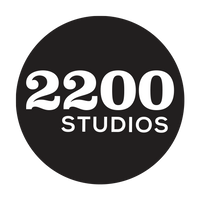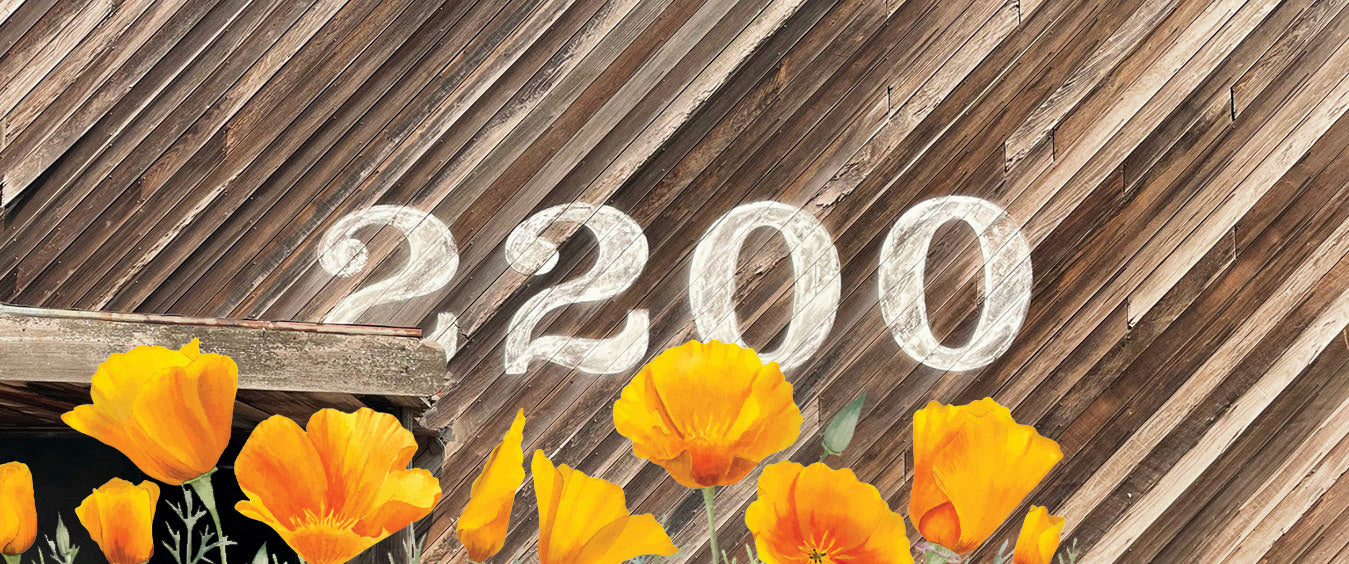Storied Legacy
2200 Studios continues a long and illustrious path started by the legendary Record Plant Recording Studios, originally formed in New York City in 1968. The Record Plant was distinctively established as the first recording studio to offer recording artists a casual, club-like environment, rather than the white-walled, clinical setting normally found in studios in the 1960’s and 1970’s. Due to the huge success of the New York studio, the Los Angeles branch of The Record Plant was opened the next year, followed by the Sausalito location.
The Record Plant Recording Studios are steeped in history. It was in the New York studio that Jimi Hendrix recorded his final studio album, Electric Ladyland. And, sadly, John Lennon was recording his last album at the Record Plant New York on December 8, 1980, just hours before he was shot and killed while returning home, still clutching the session tapes in his hand.
The New York location closed in 1987. The Los Angeles building was relocated after being destroyed by fire in 1978, finally closing in 2024. Only 2200 Studios in Sausalito remains as the last original Record Plant studio in existence.
Added as a getaway studio far from the pressures of the big city music industry, Record Plant Sausalito opened on October 28, 1972 with a Halloween-themed grand opening gala. Party invitations were crafted out of slabs of redwood which still adorn the lobby walls. Among the celebrity guests were John Lennon and Yoko Ono, who both showed up dressed as redwood trees. The Record Plant Sausalito soon became one of the top recording studios in the country.
A veritable time capsule, 2200 Studios still preserves its original 1970’s splendor and mystique. Psychedelic murals, redwood paneling, and velvet clouds adorn the building, adding to the unique visual atmosphere throughout the studios. The lore that fills the walls is endless. Fleetwood Mac guitarist Bob Welch once said of the Plant, “it really was the height of the ‘70’s ‘over-the-top-ness’”.
The legendary Sausalito studio featured many quirky amenities used to attract the ever-budding San Francisco music scene. The studio boasted a jacuzzi hot tub and a game room, as well as a waterbed on the conference room floor. Chefs prepared meals in the kitchen and tennis courts just outside the door (now pickle ball…) allowed artists to play between recordings. In the back there was a basketball hoop and on the nearby dock a speedboat was ready for quick exits.
While emersed in recording, many artists were known to camp out in the Plant. Rick James lived for a time in the conference room with the waterbed floor. Sly Stone also resided in the famed Sausalito studio working in what was known as the Pit, an inverted layer cake-shaped inground studio. The legendary Pit’s appearance was futuristic, with bright maroon plush carpet on the floors, walls, ceiling, and stairs. It was in Sly’s nearby giant mouth-shaped velvet bed where Stevie Nicks wrote Fleetwood Mac’s song “Dreams” just before running into Studio B to record what would become Fleetwood Mac’s biggest hit song. Remarkably, the vocals you hear on “Dreams” are in fact Stevie’s first take of the hit song she had just written.
Early studio clients included artists from the vibrant San Francisco music scene and beyond. Tom Petty, Fleetwood Mac, Tower of Power, Joe Walsh, Santana, John Lee Hooker, The Doobie Brothers, and many others recorded within these hallowed walls. In its first year, the studio worked on projects by Carlos Santana and Jimi Hendrix’ Band of Gypsys drummer Buddy Miles. Other notable projects included the Grateful Dead’s Wake of the Flood and Gregg Allman's first solo album, Laid Back.
A unique element of the Sausalito studio was a radio show called "Live From The Record Plant" broadcast on San Francisco’s popular rock station KSAN. The live broadcast began in 1973 with Bob Marley & The Wailers and later featured various artists such as Jerry Garcia, Peter Frampton, Pablo Cruise, Rory Gallagher, Elvin Bishop, Jimmy Buffett, Steve Miller Band, Bonnie Raitt, and Linda Ronstadt. Later the live broadcast was adopted by San Francisco’s KFOG and featured Nils Lofgren, Warren Zevon, Government Mule, Boz Scaggs, Cowboy Junkies, Little Feat, and David Crosby.
The vibe and mystique of the studio brought on continued success as more artists sought out the Plant’s solitude and banked on its reputation as a veritable hit factory.
In 1976, working with engineers Ken Caillat and Richard Dashut, Fleetwood Mac booked the studio to record their record-breaking album Rumours. Mick Fleetwood remarked of his time at the studio that his band did not go into The Pit, as it was usually occupied by strangers who were “chopping powdered drugs into lines with razors”. Despite all the sex, drugs and Rock ‘n’ Roll drama associated with the making of the album, Fleetwood Mac's Rumours went Platinum in 1977 and went on to win the Grammy for best album, beating out The Eagles’ Hotel California (which was coincidentally recorded at the Record Plant L.A.).
Another rock milestone occurred in 1977, when a 19-year old burgeoning artist named Prince recorded his debut album For You over three months at the Sausalito Record Plant. Lured to the Plant by his rock idols Sly Stone, Chaka Khan and Carlos Santana, Prince worked obsessively on the project, singing all vocals and playing all the instruments. After his work, including 46 vocal lines layered into the first track, Prince was exhausted. He later said that he was a "physical wreck" when he finished.
At this point, Gold and Platinum albums were almost expected from the Sausalito recording studio with Pablo Cruise recording two platinum albums and Dan Fogelberg recording platinum as well. Rick James became a fixture at the Record Plant beginning in 1981. He recorded all of Street Songs in Studio B, and it went multiple platinum, driven by hit songs "Super Freak" and "Give It to Me Baby". James was known both for his quick work creating songs in the studio and his high level of cocaine consumption.
By 1981 the Record Plant sold the Sausalito studio and it later became known as The Plant Studios. This era brought on more hit-making artists. Huey Lewis and the News made their hugely successful album Sports followed by John Fogerty’s Centerfield. Also in the studio, Aretha Franklin recorded Who’s Zoomin’ Who?
In 1985, with projects in progress by Heart, Journey, Starship, and Huey Lewis, the studio was seized by Federal Agents on a warrant accusing then owner of manufacturing methamphetamines at his home (not in the studios!) and investing the drug money in the studio. During the raid, Journey was recording their newest album. According to lead U.S. Marshal, master tapes and equipment were also seized by the feds. Aptly dubbed “Club Fed”, the studio continued to operate under the ownership of the federal government after the then studio manager convinced the feds that they would be able to get more value in a government sale with the studios in operation. As a result, 2200 Studios is the only recording studio with the unique distinction of being both owned and operated by the federal government.
Ultimately the government sold the studio at auction. In 1988 recording engineers Bob Skye and Arne Frager partnered up and ran the studios for 20 years. Spending $1 million, the Plant remodeled Studio A for Metallica and raised the roof from 14 to 32 feet high to achieve the bigger drum sound demanded by Metallica drummer Lars Ulrich to record their new album Load. According to Arne Frager, Metallica recorded eight albums at the Plant.
Still continuing its hit-making prowess, other recording artists who worked at The Plant during this period and into the 2000’s included Sammy Hagar, Kenny G, Mariah Carey, Michael Bolton, Todd Rundgren, Luther Vandross, Chris Isaak, The Fray, Kenny Wayne Shepherd, BB King, the Dave Matthews Band, Primus, John Lee Hooker, Third Eye Blind, Big Head Todd and the Monsters, Deftones, 4 Non Blondes, Joe Satriani, Journey, Tracy Chapman, Van Morrison, and the Doobie Brothers. Carlos Santana's huge comeback album, Supernatural, released in 1999, was made at The Plant. On a recent visit to 2200 Studios Santana commented that “This place is more important than the Vatican”.
Whether it was called the “Record Plant”, “Plant Studios”, or “The Plant”, one thing is for sure: With over thirty Rock and Roll Hall of Fame inductees and over 100 gold, platinum and multi-platinum albums and hits to its credit, the historic Sausalito recording studio, now known as 2200 Studios, is probably the hardest working and most fabled recording studio in history. 2200 Studios celebrates its eclectic and illustrious past and looks forward to catering to all music lovers and artists well into the future.











































